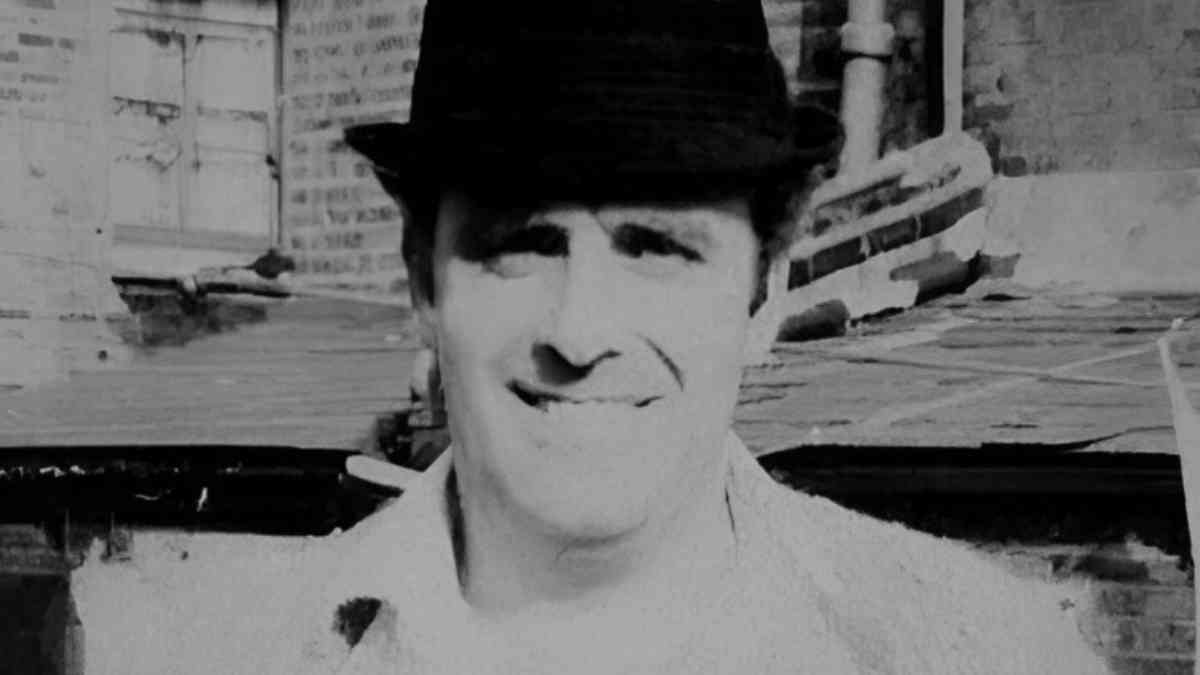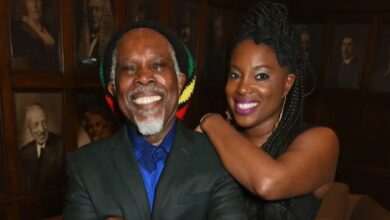Ack The Hat Mcvitie: The True Story Behind the Murder That Brought Down the Kray Twins

Jack Dennis “Jack the Hat” McVitie’s short, violent life reads like a gang-land parable: an East-End boy who rose from petty theft to feared enforcer, whose swagger and debts finally provoked Britain’s most infamous crime family to commit the one murder they could not hide. His stabbing at 97 Evering Road on 29 October 1967 not only ended his own spree of intimidation but cracked the code of silence around the Kray twins, triggering their arrest, conviction and the collapse of organised crime’s grip on 1960s London. This article traces McVitie’s journey from Battersea childhood to grisly death, the meticulous police case that followed, and the enduring cultural fascination that keeps his nickname—and trilby—alive in British folklore.
Early Life in Battersea (1932 – 1950s)
Jack Dennis McVitie was born on 19 April 1932 in Battersea, South-West London, the son of a labourer and a charwoman.
By fourteen he already faced juvenile court for stealing a watch and cigarettes, the first in a chain of convictions for burglary and assault that peppered his late teens and early twenties.
Chronic alopecia made him self-conscious; he masked it with a battered trilby, earning the nickname “the Hat” from drinking-club regulars long before the tabloids adopted it.
Friends later recalled a boy who mixed affability with flashes of cruelty—traits that would attract the underworld once the post-war black-market boomed across London’s bomb-scarred streets.
Recruiting Muscle for “The Firm”
By the early 1960s McVitie had graduated from house-breaking to debt collection, then to contract violence for the Kray twins’ outfit, popularly dubbed “The Firm”.
Ronnie and Reggie Kray valued his willingness to intimidate bookmakers, drinking-club owners and rival hoods, paying him in cash, drugs and the prestige of a seat at their night-club tables.
Yet McVitie never achieved inner-circle status; he remained a freelance whose growing cocaine habit and gambling losses soon outweighed his income.
Stories circulated of unpaid rent, smashed glasses when landlords demanded arrears, and threats even to Kray allies—behaviour that alarmed the twins and tarnished their cultivated reputation for “discipline”.
The Botched Contract on Leslie Payne
Tension peaked in early 1967 when Ronnie Kray advanced McVitie £500 to murder Leslie Payne, a former business manager who had fallen out with the twins.
McVitie allegedly pocketed the money, failed to find Payne, then swaggered through East-End pubs boasting of the twins’ impotence—words that filtered back to Reggie with lethal effect.
To the twins, the debt was secondary; the insult was existential, undermining the aura of fear on which their empire rested.
Spiralling Debt, Open Defiance
Throughout the summer of 1967 McVitie’s cocaine bills and bar-tabs ballooned.
He brandished a firearm in the Britannia pub, threatening to shoot anyone who mentioned the Krays, an act witnessed by multiple patrons who later testified in camera.
When Reggie confronted him in a Soho club, McVitie laughed, promising to “do a Cornell” on the twins—a reference to Ronnie’s earlier shooting of rival George Cornell.
Such bravado spurred Reggie to plan a public reprimand that instead spiralled into murder.
The Night at 97 Evering Road
On 29 October 1967 McVitie was lured to a “celebration” at Tony and Chris Lambrianou’s flat in Stoke Newington under the pretext of collecting money owed from a counterfeit-drug deal.
Witnesses recalled him arriving drunk after a wedding reception, brandishing a revolver that misfired when Reggie confronted him—an iconic moment later dramatised in films.
Reggie wrestled McVitie to the floor; the pistol jammed, so he stabbed him twice in the face, once in the stomach and once through the chest, puncturing the lung and aorta.
Ronnie produced a carving knife to “finish it”, but reports differ on whether he inflicted further wounds or merely supervised disposal.
The body, wrapped in bedsheets, was driven away by accomplices: its final resting place remains unknown despite extensive Thames-foreshore dredges and Essex marsh searches.
Detective Chief Superintendent “Nipper” Read Takes Over
Initial inquiries stalled; terrified witnesses recanted or vanished.
Commander Leonard “Nipper” Read—a five-foot-six powerhouse famed for incorruptibility—was reassigned to the stagnant Kray file in 1968.
Read’s tactic was psychological: he circulated rumours that informants were already co-operating, seeding paranoia inside the Firm and prising loose minor henchmen hungry for protection.
Key testimony came from Freddie Foreman and Bobby Teale, men who once idolised the twins but feared being next in line; their statements placed Reggie’s knife in McVitie’s torso and Ronnie’s calm supervision over the scene.
By May 1968 police had enough sworn depositions to arrest the brothers and an inner circle of nine on charges ranging from murder to insurance-fraud arson.
Trial, Verdicts and Sentencing
The Old Bailey trial opened on 20 January 1969 amid unprecedented security and tabloid frenzy.
Thirty-nine witnesses testified; twenty provided eye-witness accounts of the Evering Road killing, breaking a decades-long East-End taboo against informing.
On 4 March 1969 the jury found Reggie Kray guilty of McVitie’s murder, Ronnie guilty as accessory, and both twins guilty of Cornell’s earlier shooting; each received life with a minimum of thirty years—a “sentence equivalent to death by incarceration,” the judge declared.
Five associates, including the Lambrianou brothers, drew sentences of seven to fifteen years for assisting or concealing the crime.
Aftermath: The End of an Era
With the Krays removed, protection rackets fragmented, allowing Scotland Yard to dismantle satellite gangs such as the Richardsons and the Arifs through the early 1970s.
East-End pubs once plastered with the twins’ portraits replaced them with football memorabilia, symbolic of a cultural pivot from gangster glamour to popular sport.
Yet fascination lingered: tourist “Krays tours” still trace McVitie’s last steps, and his unmarked burial site spawns rumours of hidden cash, feeding a folklore industry that Detective Read decried as “romantic nonsense masking butcher’s work” before his death in 2020.
Cultural Portrayals and Myth-Making
Film, television and true-crime literature have repeatedly revived the McVitie episode.
Tom Bell’s brief but chilling cameo in The Krays (1990) set a template of twitchy defiance; Sam Spruell’s portrayal in Legend (2015), opposite Tom Hardy’s dual Krays, immortalised the nightclub stabbing for a new generation.
Documentaries—from Thames Television’s 1979 The Villains to modern YouTube retrospectives—mine witness interviews and forensic diagrams, sustaining debate over how many blows, by whom, and why no one intervened.
Critics argue such depictions glamourise brutality; survivors like Bobby Teale call pilgrimages to the twins’ graves “sickening hero-worship” and a distortion of history.
Lessons for Modern Organised Crime
McVitie’s case demonstrates three enduring truths about urban racketeering:
-
Fear is brittle – The Krays’ empire collapsed once one internal killing proved more frightening than the twins themselves; power built on terror shatters when that terror rebounds.
-
Visibility invites scrutiny – The twins courted celebrity status; the resulting spotlight accelerated police resources and media zeal that ordinary gang leaders avoid.
-
Testimony can be contagious – Detective Read’s cultivation of small-scale whistle-blowers created a domino effect, illustrating modern policing’s reliance on collaborative witness protection rather than lone informants.
Conclusion
Jack “the Hat” McVitie was no martyr; he revelled in violence, intimidated the weak and profited from narcotics. Yet his final miscalculation—taunting benefactors more ruthless than himself—became the hinge on which Britain’s post-war underworld swung. His death pierced the Krays’ mystique, empowered honest detectives, and remains a touchstone case in criminal-justice training for the psychology of gangs, witness coercion, and media influence. Over half a century later, the hat may have faded, but the cautionary echoes of that Stoke Newington night still sound in every courtroom whenever bravado meets its reckoning.



